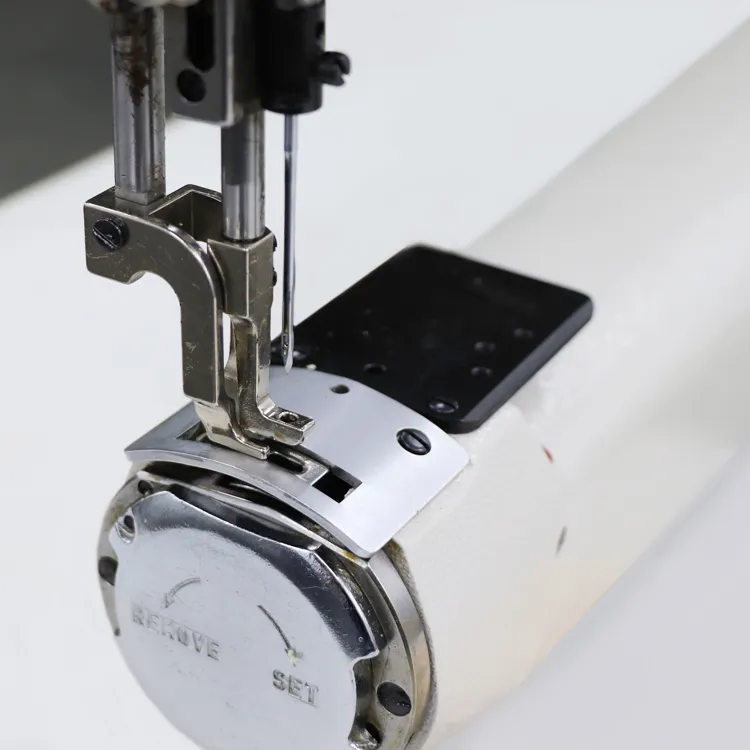Exploring the Basics and Techniques of Chain Stitch Sewing for Creative Fabric Projects
Chain Stitch Sewing An Overview of Technique and Applications
Chain stitch sewing is a time-honored technique widely used in various textile applications, characterized by its unique interlocking stitch pattern that resembles a chain. This method, which dates back to ancient times, continues to be popular among both professional seamstresses and hobbyists for its versatility and decorative appeal.
Technique and Tools
The fundamental process of chain stitch sewing begins with a sewing machine capable of producing this specific stitch type. A chain stitch is formed when the needle threads the fabric while simultaneously creating a loop of thread that interlocks with the preceding stitch. The result is a series of chain-like stitches that are not only secure but also have a pleasant aesthetic finish. While a specialized chain stitch sewing machine can enhance efficiency and precision, traditional hand-sewing methods are also used, particularly in crafts and embroidery.
To get started with chain stitching, one needs basic sewing tools fabric, appropriate thread, and a sewing machine or needle for hand stitching. Selecting the right type of thread is crucial, as the thread should complement the fabric’s texture and weight. The proper tension settings on the sewing machine are essential for achieving a flawless chain stitch and preventing issues like thread breakage or puckering.
Applications of Chain Stitch
Chain stitch has a wide range of applications. It is particularly favored in industries where elasticity is essential, such as in sewing t-shirts and activewear. The flexibility of chain stitches allows for greater movement, making garments comfortable and durable.
chain stitch sewing

In addition to practical applications, chain stitches are also widely used in decorative sewing. They lend themselves perfectly to embroidery, quilt making, and patchwork projects. Crafters often employ chain stitching to create intricate designs, borders, and motifs, elevating the aesthetic value of their creations. The stitch can be easily manipulated to form curves and shapes, providing almost endless possibilities for artistic expression.
Maintenance and Care
One of the advantages of chain stitch sewing is its durability. The stitch tends to hold up well under stress and strain, which is why it is commonly used in heavy-duty applications like upholstery and canvas. However, it is important to note that while chain stitches offer flexibility and durability, they can be more susceptible to unraveling compared to locked stitches. This means that careful handling and proper finishing techniques, such as backstitching or knotting, are vital to ensuring the longevity of the seams.
Caring for items made with chain stitching requires special attention. Gently washing garments will help maintain their integrity. It is advisable to avoid harsh chemicals and high temperatures, which can degrade the thread and fabric over time.
Conclusion
Chain stitch sewing is not only a practical sewing technique but also an artistic endeavor allowing for creative exploration. Whether used for constructing everyday garments, creating intricate embroidery, or designing unique textile art, chain stitches have made their mark in both fashion and craft. As technology continues to evolve, so does the potential for new applications of this timeless technique. Embracing the charm and utility of chain stitch sewing opens a world of possibilities for anyone passionate about sewing and textiles. Whether you are a novice or an experienced seamstress, incorporating chain stitching into your repertoire can enhance your projects and spark new inspirations.
-
Leather Sewing Machine: The Industrial Standard for Tough MaterialsNewsJul.18,2025
-
Sail Making Machine: Heavy-Duty Stitching for Industrial and Marine NeedsNewsJul.18,2025
-
Sling Sewing Machine: The Backbone of Heavy-Duty FabricationNewsJul.18,2025
-
Leather Sewing Machine: Precision for Heavy-Duty StitchingNewsJul.18,2025
-
Big Bag Sewing Machine: Powering the Future of Bulk PackagingNewsJul.18,2025
-
FIBC Sewing Machine: Essential Equipment for Bulk Bag ProductionNewsJul.18,2025
-
Heavy Duty Leather Sewing Machine: A Must-Have for Professional LeatherworkNewsMay.28,2025





























